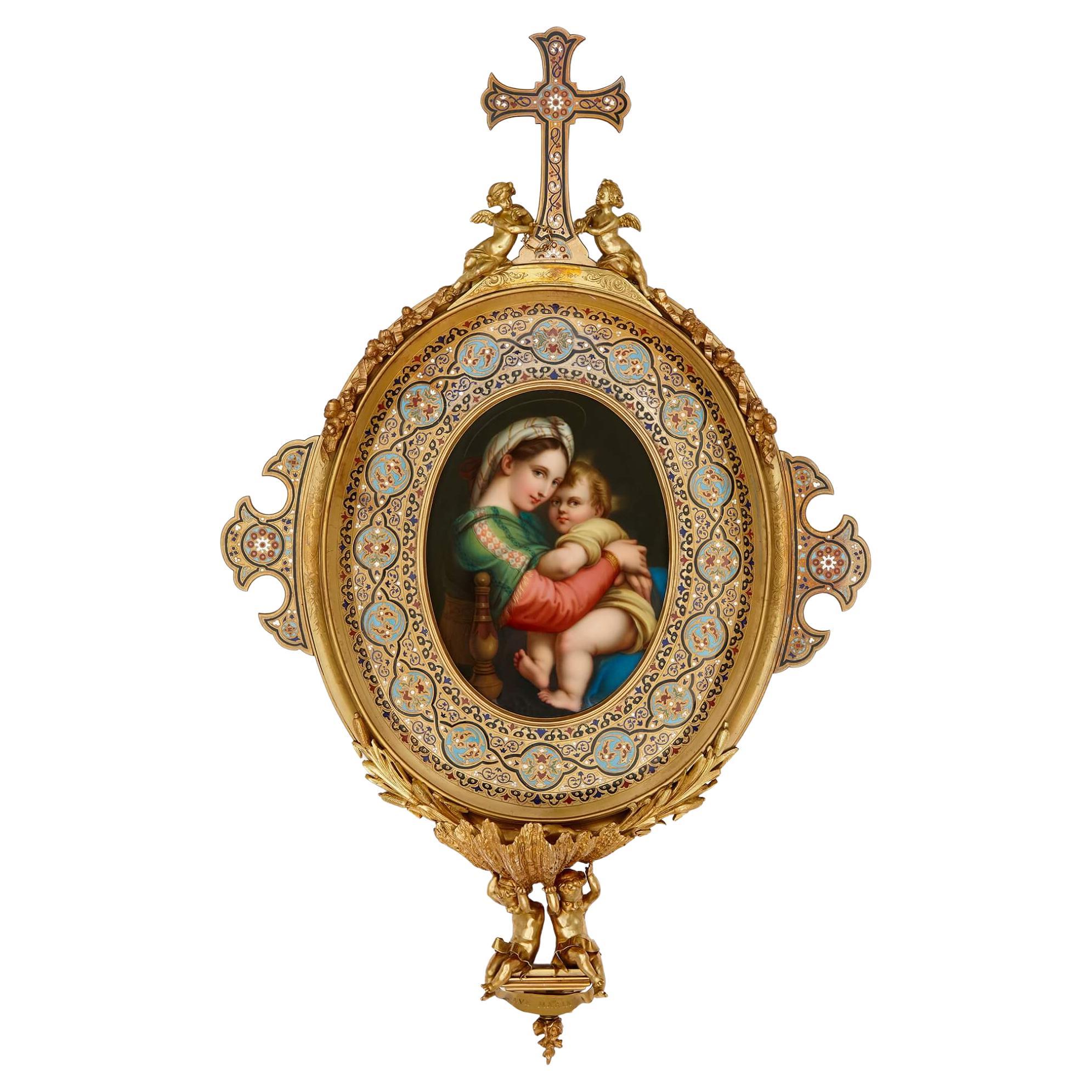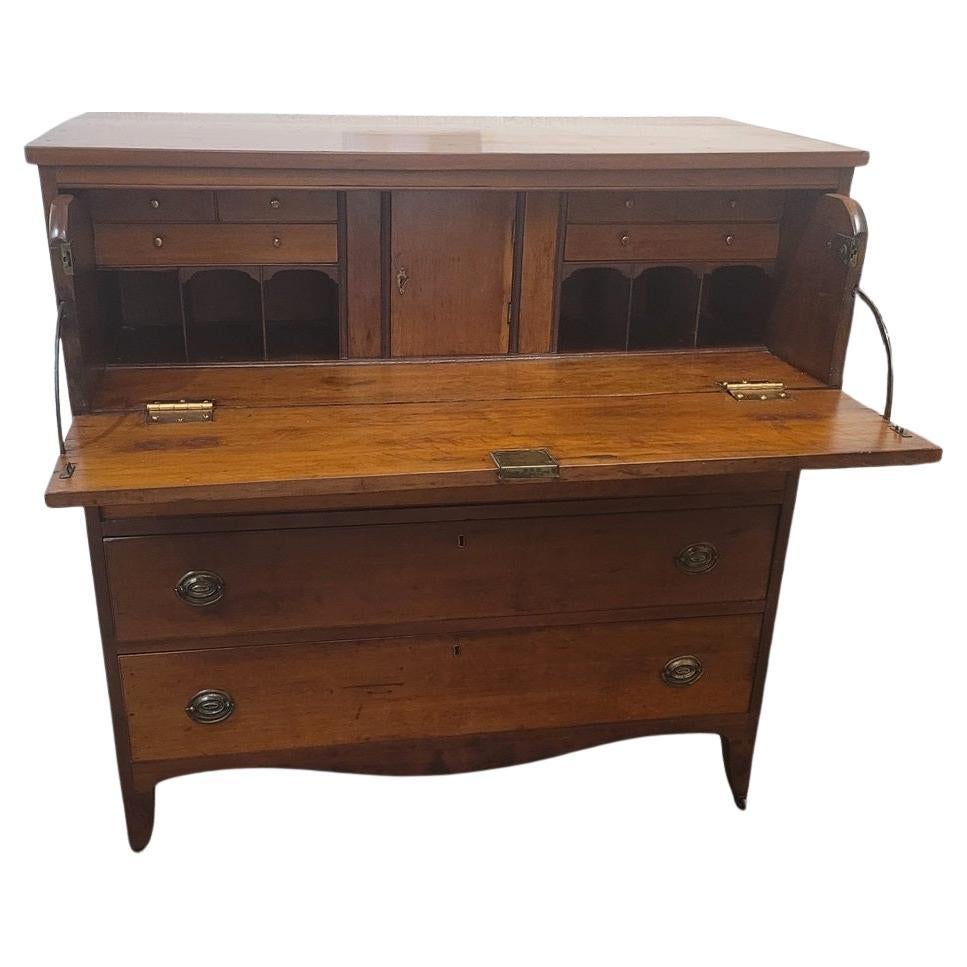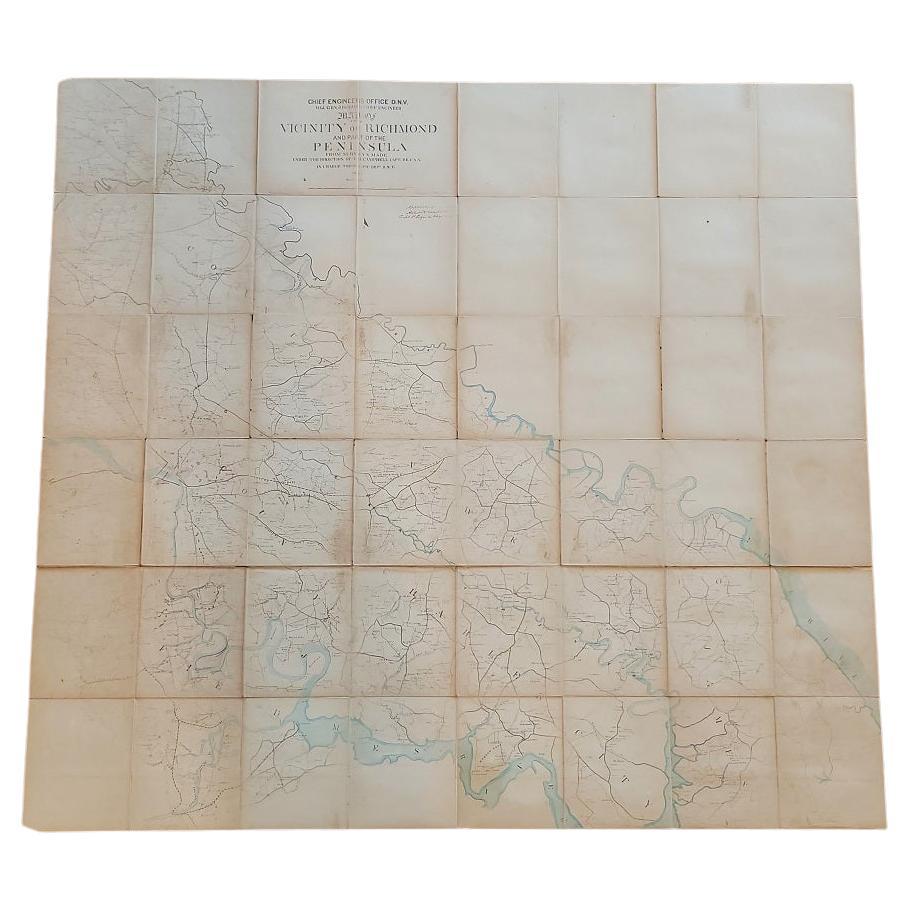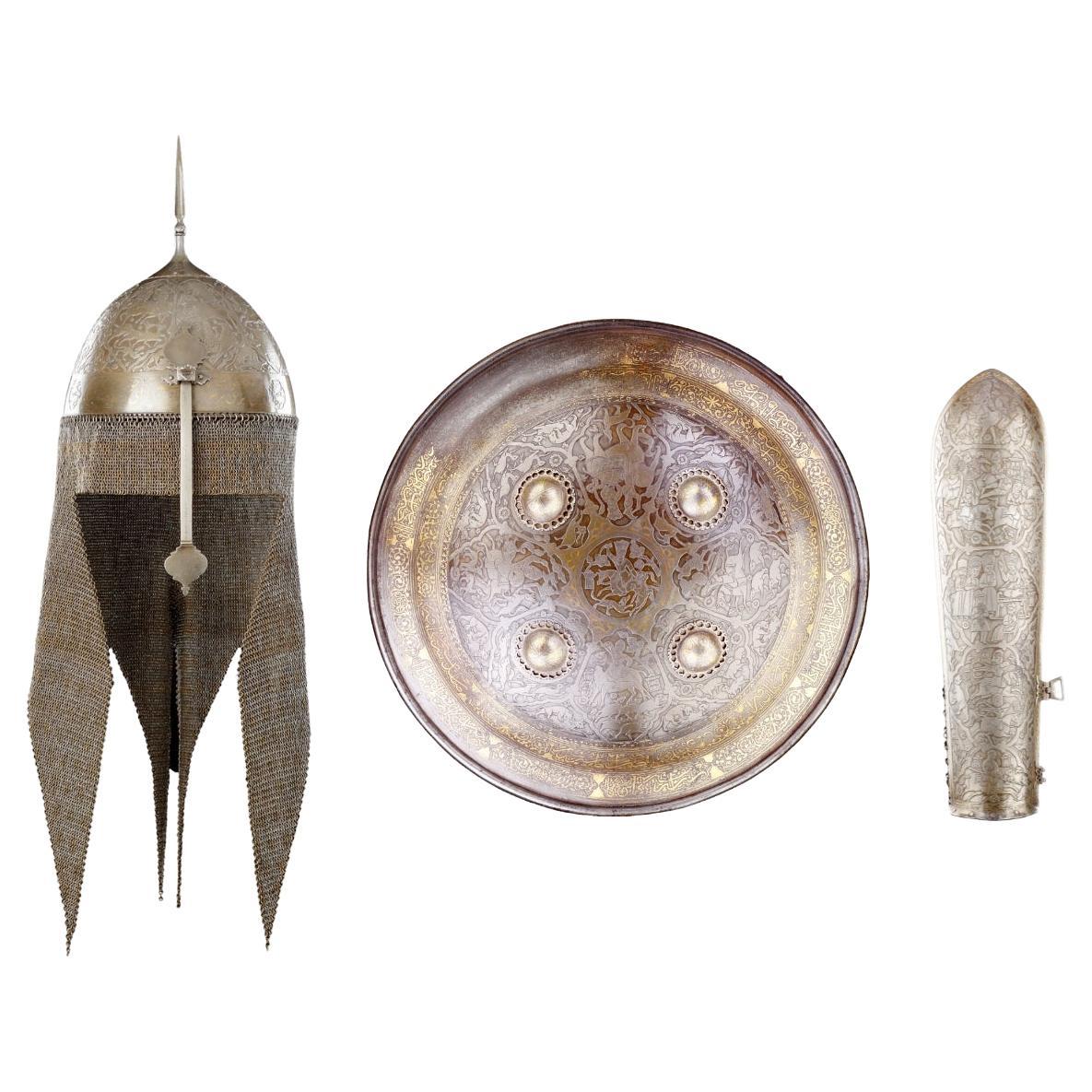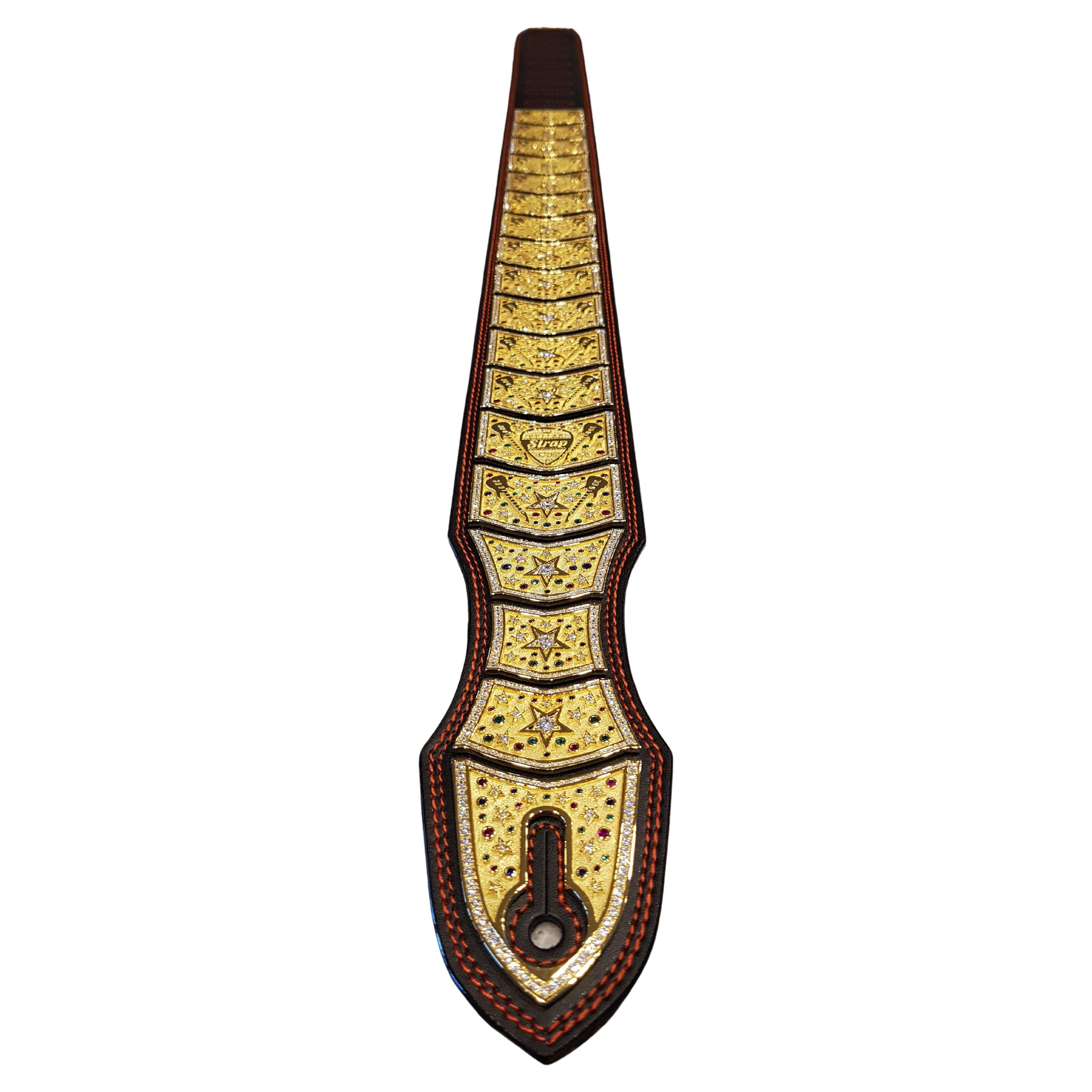Items Similar to Very Fine Classical Rosewood and Bronze Pianoforte, Sack Provenance
Want more images or videos?
Request additional images or videos from the seller
1 of 21
Very Fine Classical Rosewood and Bronze Pianoforte, Sack Provenance
About the Item
Available for Curation; Museum quality, Fine classical square grand piano forte by Alpheus Babcock (1785-1842) for G. D. MacKay, Boston", circa 1825.
A most highly figured mahogany and rosewood case with ebonizing, brass inlay and moldings, gilt mounts and ormolu, hardware.
This superb work of mastery has been documented photographed and covered in multiple antique, collector, and academic magazines, books and publications.
Of note: no marriages or alterations, made instrument, “retains it original restored playing mechanism from the 1800s ”, 34 x 68 x 24 in.
Alpheus was a most esteemed and preeminent piano maker of his time. His instruments where of the most sophisticated and splendid cases made in the period of the most rare and precious metals and exotic woods, highly figured inlays, ormolu, and most intricate and refined immaculate carvings.
Alpheus was most famous for his invention of a cast iron frame for the square piano, a design he patented in 1825. “The year of this works creation.”
The cast iron frame would become the standard for pianos of all types and sizes. Alpheus established his first company in 1809 along with his brother Lewis, who died in 1814.
Included in those business partnerships were members of the Mackay family, including George (G. D.) Mackay whose name appears on Babcock pianos beginning in 1822 until his death in 1824.
The identical Twin of this work was curated to furnish the Amory-Ticknor House opposite the Massachusetts State House for General Lafayette’s visit to Boston in 1824.
“Historic New England (2005.23.1) piano documented as part of the furnishings prepared in 1824 for Lafayette's visit to Boston (Mussey and Pearce, Rather Elegant than Showy, The Classical Furniture of Isaac Vowes pages 192-193.”
The house built by Thomas Amory in 1804 and rented by the city of Boston for use as Lafayette’s lodgings was noted in one newspaper as the “most suitable abode which could be selected for the Guest of the nation.” It was strategically chosen for its location opposite the State House and Boston Common, which could accommodate the throngs of people who attended the numerous public events, parades, and addresses of the famous Revolutionary War hero.
The furnishings supplied for seven rooms in the four-story brick house where among the finest ever assembled in Boston which lodged the Marquis de Lafayette during the Boston stay of his grand tour of the United States; commemorating the start of the American revolution.
Of note among the surviving invoices for the Marquis de Lafayette furnishings were one of Mr. John Mackay noting the loan of a Alpheus Babcock Piano Forte, of American manufacture made in Boston, that will do credit to the manufacturers of our Country.”
The contents of the quarters assembled for the Marquis De Lafayette’s visit were auctioned off shortly after his departure. Under the notice of “SPLENDID FURNITURE,” in The Evening Gazette (Boston, Mass.), Sept. 4, 1824. The week after Lafayette’s visit, the advertisement exclaimed : “The above Furniture is all of the most superior workmanship and materials, and presents the richest assortment that has ever been offered at public Sale in this city.” American Antiquarian Society (catalog # 2399).
The sister of this works creation was once in the collection of The White House purchased by the 16th President of the United States, John Quincy Adams. President Adams purchased the new Babcock creation 3 months after it was patented during the first year of his administration, (1825-1829)
The curation of the Babcock American mahogany and Rosewood Square grand piano was made in response to the criticism of the previous Monroe administration being “Too French!” in mind, taste and decor.
The younger and more modern Adams Presidency seeking to emphasize the richness of American artistry and culture bought the cast iron frame Mahogany and rosewood square grand for The White House and was played by himself & First Lady Louisa Catherine. It survives today as does this it’s sister and is now housed at the Smithsonian institute.
*Surviving examples of this work:
Museum of Fine Arts, Boston (1971.1130):
Winterthur (1989.0064):
Historic New England (2005.23.1):
The Metropolitan Museum of Art (2001.364A,B):
The Smithsonian (1982.0434.01).
*Lineage:
Illustrated in American Antiques from Israel Sack Collection, Volume VII, pp. 1810-1811, P5029. Sack notes that the piano is also illustrated in Old Time New England Bulletin, 1978, "Pianoforte Manufacturing in 19th century Boston", Nancy A. Smith, figure 4. Sack notes that the original instrumentation is intact. 193).
*Clack Pearce, Advisor and Consultant to Collectors and Institutions
*Provenance: Israel Sack; Property from an Important Boston Collection.
*The Collection of JR Dickson, New Orleans, Louisiana
Condition Report
The works are original and have been restored (not tested for functionality), finely crafted and in excellent condition overall, some minor sun fading and color variation, restorations and/or re-gilding to some mounts, very minor lifting at some brass inlay, other scattered minor veneer flaws, some small banding losses, minor lifting at ivory keys.
- Dimensions:Height: 34 in (86.36 cm)Width: 68 in (172.72 cm)Depth: 24 in (60.96 cm)
- Style:American Classical (In the Style Of)
- Materials and Techniques:
- Place of Origin:
- Period:
- Date of Manufacture:1825c
- Condition:Wear consistent with age and use. Historic item; animal/plant material that may be restricted under federal, state or local law. Buyers should check all applicable government restrictions prior to placing a bid. The buyer is solely responsible for obtaining any necessary licenses.
- Seller Location:Dallas, TX
- Reference Number:1stDibs: LU8797235171052
About the Seller
No Reviews Yet
Vetted Seller
These experienced sellers undergo a comprehensive evaluation by our team of in-house experts.
1stDibs seller since 2023
- ShippingRetrieving quote...Ships From: Dallas, TX
- Return PolicyA return for this item may be initiated within 3 days of delivery.
More From This SellerView All
- Monumental American C. LEE Full Tester, “Bed 2741 !!!”By Charles LeeLocated in Dallas, TXAvailable for curation; a monumentally superb full tester Charles Lee plantation bed. Manchester master cabinet maker Charles Lee created spectacular ...Category
Antique 18th Century American American Classical Beds and Bed Frames
MaterialsMahogany
- Monumental Giltwood MirrorLocated in Dallas, TXA truly, exceptional and most fine example of the neoclassical mastery. This monumental mirror will make a truly shows-stopping statement in any parlor it is displayed. Very forma...Category
Antique 17th Century American Federal Girandoles
MaterialsGold, Gold Leaf
You May Also Like
- Very Fine Gilt Bronze, Cloisonné Enamel and Porcelain Holy Water StoupLocated in London, GBA very fine gilt bronze, cloisonné enamel and porcelain holy water stoup French, late 19th century Measures: Height 54cm, width 34cm, depth 9cm This b...Category
Antique Late 19th Century French Renaissance Religious Items
MaterialsEnamel, Ormolu
- American Hepplewhite Virginian Secretary Chest with Civil War ProvenanceBy George HepplewhiteLocated in Dallas, TXPRESENTING a FANTASTIC and HISTORIC Early 19C American Hepplewhite Virginian Secretary Chest with OUTSTANDING Provenance. This Secretary Chest was made in Virginia in the Early 19th Century, circa 1810. It is made of cherry, walnut and maple and is most definitely in the Hepplewhite Style of the period, with it’s original Hepplewhite brass drawer pulls. IT IS A REALLY INTRIGUING AND HISTORIC PIECE, ESPECIALLY, WHEN VIEWED IN CONTEXT WITH IT”S AMAZING PROVENANCE! This piece was originally owned by Major William Alexander Obenchain who ‘hailed’ from the State of Virginia. He was an engineer and was in the Virginia Corps of Engineers during the Civil War and served on General Robert E. Lee’s staff. It was acquired by him before the Civil War and we believe that this piece was on campaign with him during the War. We know for a fact that he fought at the Richmond Campaign in 1864, as we have, in our Collection, his original Field Map for that Campaign which ended the War. It has remained in family ownership ever since. It has come directly from the Family Estate, together with other VERY IMPORTANT items belonging to Major Obenchain and other IMPORTANT items that belonged to his wife, Eliza Calvert Hall-Obenchain. ALL these items contained in the Collection, are listed/posted individually on our Website. The top drawer is on retractable curved side hinge supports and pulls outwards and drops to reveal a secretary and writing area. The Bureau/Secretary Gallery has 6 drawers and 6 cubbies, a central tabernacle door with another drawer and 2 cubbies and this is flanked by 2 secret pull out compartments. The central tabernacle door has it’s original key and working lock. Closed, it is almost ‘flush’ like the rest of the drawers, with some very minor bowing through age. The 3 drawers underneath are graduated in size and it ends with a serpentine shaped base and sits on four hand carved legs with original metal casters, marked ‘Universal 3’. It has it’s original brasses and hardware throughout, save the addition to 2 contemporary replacement brass hinges to the drop down desk front, as the original hinges were broken, could not be repaired and were not supporting the weight of the drop down leaf. Some minor repairs but not noticeable. Otherwise, the piece is in it’s entirely, ORIGINAL condition! What makes this piece even MORE INTRIGUING and APPEALING HISTORICALLY, are the 2 ‘historic’ circular holes on the piece:- (1) in the back of the piece as seen in the photos. This hole is not symmetrical or fully round and appears to serve no purpose to the piece whatsoever. Sometimes, pieces have holes for wiring for lighting, put in them over the years, but this one never had such lighting or, indeed, any such explanation for this hole, AND (2) the rear hole is replicated, in the corner portion of the bottom drawer and someone (a very long time ago) has used a tin can top, to cover the hole in the back of the drawer. The tin can top is period to the Civil War Era and is embossed “Minimum Volume 1 Pint”. Our conclusion, is that (whilst we are, by no means ballistic experts) that these holes were created by musket balls, fired during one of the Major’s campaigns in the Civil War. It is entirely conceivable that this piece, being strapped into a covered wagon for carriage, would have been on it’s side. We are of the opinion that both holes, were caused or created by a musket ball entered the chest trough the base and back. We also believe that ‘the Major’, used what he had at his disposal on the battlefield, namely, a tin can lid to repair the hole in the drawer. SO THIS PIECE IS A VERY SPECIAL PIECE OF US HISTORY, INDEED! NOT ONLY IS IT AN EARLY 19th CENTURY AMERICAN PIECE, WITH A CONNECTION TO THE STATE OF VIRGINIA, THE CIVIL WAR, HISTORIC & IMPORTANT FIGURES IN THAT WAR AND IMPECCABLE PROVENANCE AND HISTORY! IT IS TRULY UNIQUE! William Alexander Obenchain. Born April 27, 1841 at Buchanan, Botetourt Co., Virginia. Parents: Thomas Jefferson Obenchain and Elizabeth Ann Sweetland. Entered VMI on July 18, 1859 as a member of the VMI (Virginia Military Institute...Category
Antique Early 19th Century American American Classical Historical Memora...
MaterialsBrass
- Important Confederate Field Map of Richmond VA 1864 with ProvenanceLocated in Dallas, TXPRESENTING AN HISTORIC AND EXCEPTIONALLY RARE AND IMPORTANT American Civil War Collection consisting of: (1) ORIGINAL and FULLY AUTHENTIC Confederate Field Map of Richmond, VA 1864 belonging to Capt W.A. Obenchain C.S. Engineers, (2) ORIGINAL and FULLY AUTHENTIC Surrender/Parole Paper for Capt. W.A. Obenchain dated 1st May 1865 at Greensboro, NC (3) ORIGINAL and FULLY AUTHENTIC Pamphlet for Hillsborough Military Academy, NC with Major W.M. A. Obenchain listed as 'Military Staff'. These ALL belonged to Captain (later promoted to rank of Major) William Alexander Obenchain and the battlefield map was his 'personal' field map for the Battle of the Richmond Peninsula in 1864, at the end of the US Civil War...Category
Antique Mid-19th Century American American Classical Historical Memorabilia
MaterialsCanvas, Paper
- Large, very fine, and unique Indian gilt-metal and silver sporting shieldLocated in London, GBLarge, very fine, and unique Indian gilt-metal and silver sporting shield Indian, c.1927 Depth 13cm, diameter 68.5cm Awarded as a polo trophy to a team wh...Category
Vintage 1920s Indian Anglo-Indian Sports Equipment and Memorabilia
MaterialsSilver
- A Very Fine Set of Persian Chiselled ArmourLocated in London, GBA Very Fine Set of Persian Chiselled Armour Steel, gold, gilt, mail; iron and brass, leather Dated 1797 Persia Late 18th Century Size: helmet: 70cm long - 27½ ins long / shield...Category
Antique Late 18th Century Persian Arms, Armor and Weapons
MaterialsGold, Brass, Steel, Iron
- Showstopper 18K Yellow Gold, Fine Diamond and Precious Gem Set Guitar StrapBy Colin Burn ArtLocated in Halls Head, Western AustraliaThe Showstopper is the world’s most opulent guitar strap ever crafted. Made from high-quality premium leather, it's embellished with over 1 kilogram of 18...Category
21st Century and Contemporary Australian American Classical Musical Inst...
MaterialsGold
Recently Viewed
View AllMore Ways To Browse
Modern And Antique Decor
Used Musical Instruments
The Everly Brothers
Antique Wood Frames 16th Century
John Quincy Adams
Small Grand Piano
John Dickson
Marquis Inlay
Marquis De Lafayette
Marquis Lafayette
Ormolu Piano
Restoration Hardware Frame
Lady Playing Piano
Vintage Radios For
Vintage Musical Instrument Musical Instruments
Vintage Musical Instrument
Vintage Musical Instruments Musical Instruments
Vintage Radio Furniture
